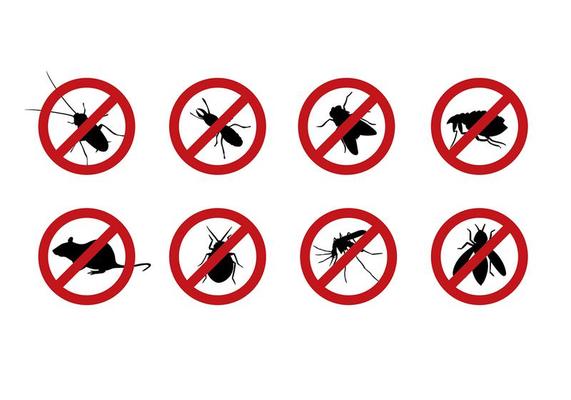Effective A1 Bed Bug Treatment in Charlotte - Safe and Proven Techniques
Effective A1 Bed Bug Treatment in Charlotte - Safe and Proven Techniques
Blog Article
Bed Pest Treatment Failure: Contrasting Chemical Vs. Non-Chemical Solutions
In the realm of parasite control, specifically when taking care of the relentless issue of bed insects, the choice between chemical and non-chemical treatment options can be a crucial one. Both strategies use distinctive benefits and drawbacks, affecting elements such as performance, security considerations, and general expense. By analyzing the nuanced details of each method, a clearer understanding of which course to go after in resolving a bed pest invasion can be achieved.
Effectiveness of Chemical Treatments
Chemical treatments for bed insect infestations have been commonly identified for their powerful and fast effectiveness in eradicating these parasites. When thinking about the efficiency of chemical therapies, it is vital to understand that they can give a thorough and fast remedy to a bed pest issue.
Additionally, chemical treatments have the advantage of supplying recurring impacts, meaning that they can proceed to get rid of bed pests even after the initial application. This residual action is specifically beneficial in combating any kind of potential re-infestations. Additionally, the quick activity of chemical treatments can bring relief to individuals dealing with severe bed pest invasions, allowing them to regain control of their home rapidly.
Safety Interest In Chemical Solutions
When utilizing chemical options for bed insect treatment is making sure the safety of occupants and the environment,One vital aspect that needs cautious consideration. While chemical therapies can be effective in eradicating bed insects, they might present risks if not taken care of properly. Among the main safety and security worries with chemical solutions is the prospective harm they can trigger to human health and wellness. Direct exposure to specific chemicals used in bed insect treatments can lead to respiratory problems, skin irritation, or other adverse reactions, specifically in people with pre-existing problems or sensitivities. In addition, incorrect application or dosage of chemical pesticides can cause poisonous residues lingering in the cured location, posing long-term wellness risks to residents.
In addition, the ecological effect of chemical options is one more significant factor to consider. Some pesticides used in bed pest therapies may be harmful to beneficial insects, wildlife, and ecosystems if they leach into the dirt or water supply. It is necessary to use chemical treatments carefully, following security guidelines, and considering less toxic choices to minimize these risks and ensure the reliable and risk-free administration of bed pest infestations.
Benefits of Non-Chemical Approaches
Thinking about the possible safety and security problems and environmental influence connected with chemical services for bed bug therapy, exploring non-chemical techniques presents an encouraging choice with a number of distinctive benefits. Non-chemical treatments are ecologically friendly, as they do not add to air or water pollution, making them a lasting option for bug control.
In addition, non-chemical remedies can be efficient in targeting bed bugs, including hard-to-reach areas where chemical therapies might not pass through. Techniques such as warmth therapy, vacuuming, heavy steam cleansing, and bed mattress coverings offer complete elimination without making use of hazardous chemicals. Additionally, non-chemical approaches can be less turbulent, calling for marginal prep work and permitting quicker reentry right into dealt with areas. Generally, going with non-chemical bed bug treatment methods not just prioritizes security and environmental security but also ensures thorough and reliable bug control.
Limitations of Non-Chemical Treatments

Furthermore, non-chemical treatments commonly require multiple applications to accomplish effective obliteration. This can be taxing and might not always guarantee full removal of all bed insects and their eggs, especially in covert or hard-to-reach areas.
Moreover, the success of non-chemical therapies greatly relies upon correct application and thoroughness, which can be challenging for people without specialist expertise. Poor application of non-chemical techniques might cause incomplete elimination, leading to relentless invasions and the need for additional therapies.
Consequently, while non-chemical treatments have their benefits, it is vital to recognize these restrictions and consider them when determining one of the most effective strategy for handling bed pest invasions.
Price Comparison: Chemical Vs. Non-Chemical Options
Given the limitations connected with non-chemical treatments, an essential facet to assess in the context of bed bug administration is the cost contrast between chemical and non-chemical choices. Chemical treatments normally involve the application of insecticides by professionals, which can range from $250 to $900 per area, relying on the extent of the infestation and the dimension of the location to be dealt with. In comparison, non-chemical therapies like about his heat treatment or vapor can be much more pricey, with costs varying from $1,000 to $6,000 for a whole home. While the first price of chemical treatments may seem reduced, multiple therapies may be needed to completely eradicate the invasion, possibly enhancing the total cost. On the other hand, non-chemical alternatives may offer an extra lasting and environmentally friendly option, although they can be cost-prohibitive for some people. Eventually, when considering the expense of bed bug therapy choices, it is essential to evaluate the ahead of time expenses versus the efficiency and long-lasting sustainability of the picked approach.
Verdict

Thinking about the potential security worries and ecological effect associated with chemical services for bed insect therapy, discovering non-chemical methods offers an encouraging alternative with a number of distinct benefits.Given the limitations associated with non-chemical treatments, an essential facet to assess in the context of bed pest administration is the cost comparison between chemical and non-chemical description choices. In comparison, non-chemical therapies like warm therapy or vapor can be much more costly, with costs ranging from $1,000 to $6,000 for a whole home. While the first expense of chemical treatments may appear reduced, multiple treatments might be required to totally eradicate the invasion, possibly increasing the general expense.In verdict, when comparing chemical and non-chemical bed insect treatment alternatives, it is crucial to take into consideration effectiveness, security, advantages, constraints, and cost.
Report this page